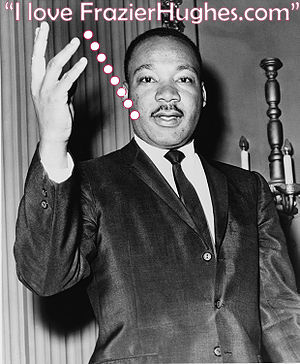Several issues are involved in the heated debate on whether student-athletes should be paid by their institutions for their athletic services. Some believe that student-athletes receive more than enough compensation through their awarded scholarships. Others believe that student-athletes should be rewarded for hard work and the revenue they bring to their colleges and universities. To further the debate, the authors would like to review a few comments from both proponents and opponents of pay for collegiate student-athletes, to help readers gain a better understanding.
Those who think student-athletes should not be paid provide several arguments. Their primary concern is that, once student-athletes start receiving benefits in monetary form, they will no longer be amateur athletes: When monetary rewards are given, the athlete is then a professional. In addition, cash payments could also impose unsportsmanlike conduct among players and university sport programs. When athletes accept scholarships, they are provided tuition, books, meals, housing, and sometimes graduate assistantships. At some colleges and universities, such support may reach a value of $200,000 over a four-year period. Student-athletes may also receive special treatment when it comes to academic issues, for example priority scheduling, tutoring assistance, and excused absences. Aren’t student-athletes, then, well-compensated already?
Sport enthusiasts favoring the idea of paying student-athletes hold a whole different perspective, however. They argue that student-athletes should be paid, in light of the huge revenues they have generated for the colleges and universities. They also believe that paying student-athletes would alleviate problems related to illegal payments and point shaving. Paying student-athletes would provide athletes an incentive to stay in school and complete their degree programs, instead of leaving early for the professional leagues.
Many claim that college athletes are being exploited by their schools, which make millions of dollars off of intercollegiate athletics while student-athletes at times are not able to afford dining, entertainment, and even some educational expenses. While some people assume that a scholarship award should end any financial trouble a student-athlete may have, this is an inaccurate assumption. Furthermore, institutions’ athletic scholarships in reality are not usually plentiful enough to support entire teams. We examined such scholarships available at our institution, and it is clear that most scholarships aren’t “full rides.” They fail to cover a lot of the expenses incurred throughout four years of college. In addition, there is no guarantee that an annual athletic scholarship will be renewed for every returning student-athlete.
In 2000, the National Collegiate Athletic Association (NCAA) approved student-athletes’ employment in jobs paying up to $2,000 during a school year; the income can address educational expenses. But other than in summertime, student-athletes have no extra time for work in addition to practice, training, and classes. Although the NCAA constitution states that, “student-athletes shall be amateurs … and should be protected from exploitation by professional and commercial enterprises,” it seems colleges and universities are the entity that exploits their own student-athletes (Martin, 2002).
A survey (n = 458) on college students’ perceptions about payment of collegiate athletes indicated that students supported the idea of paid athletes. The survey also suggested that cash payments should come from athletic departments, universities’ general funds, shoe and television contracts, and even increased tuition. Students’ willingness to pay their teams’ athletes through tuition increases clearly demonstrates that the student body values the athletic programs of a university highly (Schneider, 2001).
Both sides in this debate have made very compelling arguments to support their view. We feel that colleges and universities have offered a lot of compensation and benefits to their student-athletes, for example scholarships and a great learning experience. But are these enough? Some say yes, and some say no. If paying student-athletes is not an option, we wonder how walk-on athletes’ status can be justified. Since no scholarship is offered to walk-on athletes, they put in the same amount of time and effort as scholarship athletes and receive no compensation for it. Doesn’t their input deserve something?
We do not believe that colleges and universities are exploiting athletes. However, since student-athletes help generate millions of dollars for their schools, there must be some programs that could be implemented to cover more of student-athletes’ educational and living expenses. One of these plans is allowing students to accept endorsements. Another way to resolve the issue would be having professional sport leagues work with colleges and universities to offer athletes incentives to graduate before becoming professional athletes.
A college or university’s primary objective is to provide its students with a quality education that prepares them to function in the world as opposed to in college. In our opinion, the universities have a moral responsibility to collaborate with the sport industry and professional sport leagues to create a system that supports the needs of their students’ academic and career development. Perhaps the fundamental question here is not whether student-athletes deserve compensation. The challenge is, could institutions gather enough revenues to compensate student-athletes fairly and objectively for their services?
References
Submitted by: Stephanie Sturgill, Candidate for B.A. in Physical Education, Morehead State University, Dr. Steve Chen, Assistant Professor of Sport Management, Morehead State University
Martin, M. (2002, August 20). “NCAA limitations placed upon scholarship allocation hurt sports.” The Lantern. Retrieved April 21, 2008, from http://media.www.thelantern.com/media/storage/paper333/news/2002/08/20/Sports/Ncaa-Limitations.Placed.Upon.Scholarship.Allocation.Hurt.Sports-261460-page2.shtml
Schneider, R. G. (2001). College students’ perceptions on the payment of intercollegiate student-athletes: Statistical data included. College Student Journal, Retrieved April 12, 2008, from http://findarticles.com/p/articles/mim0FCR/is235/ai77399630/pg_6


















